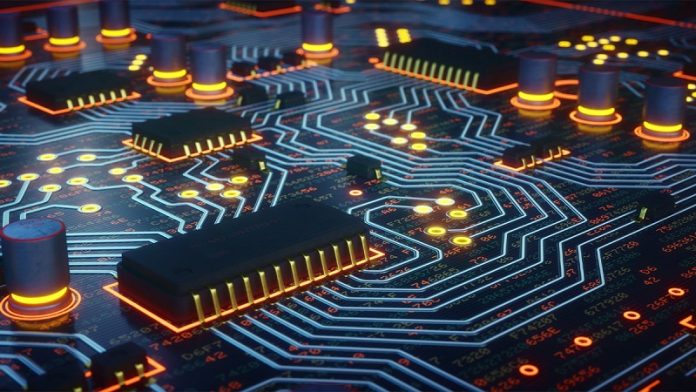Armed with more than 100 patents and leveraging multi-decade expertise in creating Industry leading silicon systems and semiconductors, Ceremorphic Inc. plans to deliver a complete silicon system that provides the performance needed for next-generation applications such as AI model training, HPC, automotive processing, drug discovery, and metaverse processing. Designed in advanced silicon geometry (TSMC 5nm node), this new architecture was built from the ground up to solve today’s high-performance computing problems in reliability, security and energy consumption to serve all performance-demanding market segments.
Dr Venkat Mattela, Founder & CEO, Ceremorphic had an exclusive conversation with ELE Times Sub Editor Mayank Vashisht for more on this. Excerpts:

ELE Times: Why is energy-efficient supercomputing becoming popular? Why is the initiative to improve energy efficiency in HPC/supercomputing important?
Since the introduction and production of supercomputers in the 1960s, the ability of high-performance computers (HPCs) to tackle complex applications has improved drastically but so has their electricity consumption. Supercomputers need more than a megawatt of power with annual electricity expenses often reaching millions of dollars. AI programs are most often performed on supercomputers and the term “supercomputing” has also gained traction and become synonymous with AI.
And given that today energy efficiency in everyday functioning is also the need of the hour, at Ceremorphic, we have developed a new architecture for next-generation applications such as AI model training, high-performance computing, drug discovery, and metaverse processing. Our advanced 5nm silicon geometry-based architecture satisfies high-performance computing needs in terms of reliability, security, and power consumption at scale. We’ve zeroed in on our focus on reliable high-performance computing and have already made a lot of progress on this front.
ELE Times: How is Ceremorphic’s product likely to disrupt the semiconductor space? Is the Indian ecosystem ready for semiconductor manufacturing? Perspective.
The semiconductor industry roadmap today includes tools and nodes for developing advanced silicon products, with the 5nm node being particularly efficient for producing high gate density (approximately 40M gates in 1 sq. mm area) and high performance. If a company has access to this technology node, extremely efficient and high-performance processors with manageable physical die sizes can be created. Managing leakage power and reliability, on the other hand, is a challenge with these nodes. Reliability and energy efficiency limit the adaption of AI / ML applications in many segments.
Ceremorphic is one of the few chip companies in the industry with access to TSMC’s 5-nanometer node, but its real differentiation will come from in-house technologies that provide competitive advantages in efficiency, reliability, and security for AI, high-performance computing, and beyond.
Our current technology portfolio and the design of QS1 (the first chip in the Hierarchical Learning Processor – HLP series) will address reliability and energy efficiency issues and pave the way for an architecture that will enable Exascale performance while maintaining a manageable power budget. This method also aims to reduce the cost of high-performance computing systems, allowing AI and machine-earning applications to become more widely used.
Manufacturing in India depends on two essential components – Talent and Infrastructure. While there is no dearth of talent in India, infrastructure and previous experience are driving factors in bringing about change. India is changing in a noticeable way, and developing advanced silicon products like QS1 in India will accelerate the development of semiconductor infrastructure in India.
ELE Times: What are some of the new technologies and innovations that will be able to address the shortcomings around energy efficiency, reliability etc.?
Ceremorphic’s competition is against larger semiconductor firms that design CPUs and GPUs with advanced node access and deep resource pool access. . There is no single item that will address these complex metrics of reliability and energy efficiency in today’s semiconductors. There is a roadmap to address these with future device architectures beyond CMOS and quantum computing. We have created significant intellectual property in the space of device structures beyond CMOS already. Our first product leverages our expertise in developing silicon design, low-power designs and microarchitecture and innovations over the years to accomplish these goals.
Quantum computing is the future where massive computing is possible in small areas which enables a path towards exascale machines. It becomes further complicated; normal electronics do not perform well at high temperatures. In contrast, an ultra-cold superconducting diode may thrive. Other potential beneficiaries include the massive server racks that line the world’s data centres. They consume 1 per cent of the world’s energy – equivalent to the consumption of whole mid-sized countries.
Significant modifications to a supercomputing system are disruptive and costly since it is an ecosystem. All components of the ecosystem and their linkages must be considered while building future generations of supercomputers.
Ceremorphic features a customized machine learning processor, a custom floating-point unit, and unique video processing engines in the Hierarchical Learning Processor popularly called an “ultra-low energy supercomputing chip.” A customized PCIe 6.0 interface has also been developed by the company. Ceremorphic will benefit from this customized technology in three crucial areas: reliability, security, and energy efficiency. They will also enable the business to generate chiplets designs for a wide range of products, from virtual reality glasses to supercomputers.
ELE Times: Go-to-market strategy for Ceremorphic in India
Vertical integration has become key to companies in the industry. Ceremorphic’s unique technology portfolio coupled with a qualified team makes it a perfect partner to many industry giants. Our go-to-market strategy will be global in scope, with India as a target market. Utilizing the talent and knowledge of the team in India to efficiently create a product with that of QS1’s complexity. Through our OEM (Original Equipment Manufacturer) network, we intend to produce end goods for target sectors such as data canters, AI training, automotive, robotics, metaverse processing, and life sciences. We will also be developing system solutions with our own hardware after-market products, workstations and servers.
For this decade, however, we still have enough challenges to optimize the architectures to provide the right reliability and energy efficiency. The India Development Centre continues to have a significant impact on Research and Development, and we are already engaged in the development of architecture, algorithms, semiconductor design, and software tools. And the product will be available throughout the world.
Mayank Vashisht | Sub Editor | ELE Times








